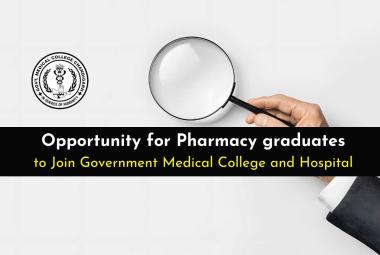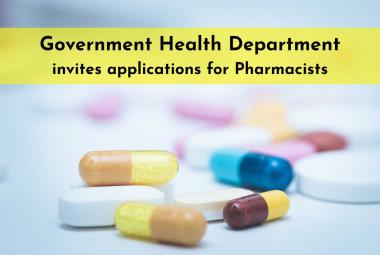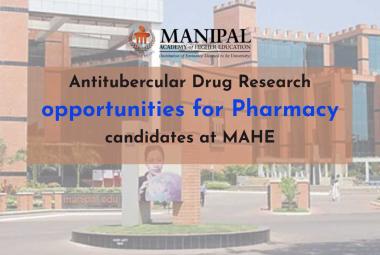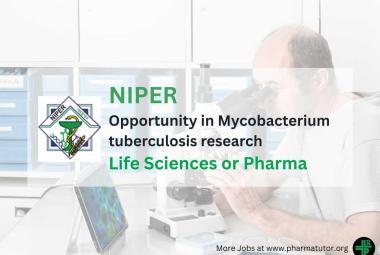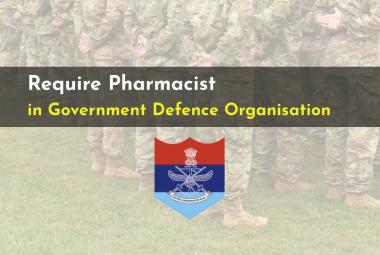{ DOWNLOAD AS PDF }
ABOUT AUTHORS:
Dhiraj Yadav
M.S. Pharm (Medicinal chemistry),
NIPER, Raebareli
dhirajyadav06@gmail.com
The Drug and Cosmetic Act 1940 and Rules 1945, a central legislation regulating the manufacture, sale, and quality of drugs and formulations in India provide definition of 'Spurious Drug' under its section 17-B.
- If it is manufactured under a name which belongs to another drug
- If it is imitation of, or is a substitute for, another drug or resembles another drug in a manner likely to deceive or bears upon it or upon its label or container the name of another drug unless it is plainly and conspicuously marked so as to reveal its true character and its lacks of identity with such other drug
- If the label or container bears the name of an individual or company purporting to be manufacturer of the drug; which individual or company is fictitious or does not exist
- It has been substituted wholly or in part by another drug or substance or
- If it purports to be the product of manufacturer of whom it is not truly a product.
Are counterfeit drugs really dangerous?
They can be. If you take counterfeit drugs, you are at risk for serious health problems, including unexplained side effects or allergic reactions. And your health could worsen if the “drug” you are taking is ineffective.
For example, Procrit, a drug used by cancer and AIDS patients to fight fatigue and anaemia, was counterfeited in 2002. Counterfeiters watered-down the medicine with non-sterile tap water to one-twentieth of the strength listed on the label. The tap water posed a risk of infection in already weak patients. Another recently counterfeited drug was Epogen, a drug used to treat severe anaemia. Counterfeiters also watered-down this medication and reduced its effectiveness in patients’ bodies. These watered-down medications failed to help those patients when they needed them most. And in the summer of 2003, nearly 200,000 tablets of the cholesterol reducing medication Lipitor were found to be fake and recalled.
Are counterfeit drugs a big problem?
While U.S. drug supplies are generally considered safe, incidents of counterfeit drugs have been increasing. In the 1990s, the Food and Drug Administration (FDA) investigated an average of 5 cases a year; there have been more than 20 investigations per year since 2000. Counterfeiters are becoming more sophisticated in their technologies and methods of introducing counterfeit drugs into the US system.
How can I tell if my drugs are counterfeit?
The best way for consumers to identify potential counterfeits is to be as familiar as possible with the drugs they regularly take. It’s difficult to tell just by looking at them, but the more familiar you are with both the packaging and the drugs themselves, the better the chances are that you’ll detect a fake drug before taking it. If you know the size shape, color, and taste of the medications you take, you will more easily identify possible counterfeits. When something doesn’t look or taste quite right, be suspicious. Check for altered or unsealed containers, or changes in the packaging or label. You might also be able to tell if a drug doesn’t have the effect that it promises, has different side effects than described, or doesn’t work in the same way as it did when you took it previously. You can reduce the risk of getting counterfeit drugs by buying from reputable pharmacies, but even they sometimes offer counterfeit drugs for sale without realizing it.
What is the FDA doing about this problem?
The FDA is currently working with companies that make and sell drugs to identify and prevent counterfeit drugs. A report issued by the FDA in February 2004 describes steps that can be taken to secure the U.S. drug distribution system. They include: strengthening laws to license and regulate drug wholesalers and distributors, adopting safe business practices by all players in the drug distribution chain, implementing new technologies to prevent counterfeiting, developing a system for reporting counterfeit drugs to the FDA quickly, working with governments and businesses in foreign countries, and educating consumers and health professionals about the risks of counterfeit drugs and how to report and respond.
How does the FDA learn about counterfeit drugs?
While manufacturers, wholesalers, re-packagers, and pharmacists are in the best position to detect counterfeit drugs, they’re not currently required by law to report their suspicions to the government. But the FDA is developing a new reporting system, and the pharmaceutical industry recently announced a voluntary reporting program where companies agree to notify the FDA within five days of suspecting a drug has been counterfeited. The FDA also hears about counterfeit drugs from consumers and health care professionals.
Furthermore, the FDA has created a new alert network to provide information about counterfeit drug cases to various consumer groups and health professional organizations.
What are the new ways to stop the drug counterfeiters?
There are several technologies that could help stop counterfeiter in the United States. For example, radio frequency identification uses tiny electromagnetic devices placed in drug packaging to track products as they move through the distribution system. Other anti-counterfeiting technologies include tamper-proof packaging, special watermarks, and holograms that would be difficult for criminals to copy.
If I purchase drugs over the Internet, should I be concerned about counterfeits?
Legitimate drugs are sold in many ways, including the Internet, and so are counterfeit drugs. While purchasing drugs from online sellers can be convenient and economical, there are illegal Web sites that may sell you a contaminated or counterfeit product or a product that has not been approved by the FDA, deliver the wrong product, or take your money and never deliver anything in return. You can reduce the likelihood of trouble by dealing with legitimate, licensed online pharmacies.
What Are the Risks of Taking Counterfeit Drugs?
If you use a counterfeit drug you may be at risk for serious health problems, including unexpectedside effect,allergic reactions, or a worsening of your health condition. These can occur because a counterfeit drug may:
· be contaminated with harmful substances
· contain the wrong active ingredients, which may not treat your condition or may cause unwanted side effects
· have too little or none of the active ingredient, which will be insufficient to treat your condition
· have too much of the active ingredient, which can cause unwanted and potentially dangerous side effects
· be packaged in phony wrapping, which may have incorrect directions on how to use the medication
How Can I Avoid Counterfeit Medications?
There are several things you can do to protect yourself from the risks associated with counterfeit drugs, including.
- Purchase your prescription medications from licensed drugstores in the U.S. Although possible, it is rare for drugs purchased at a reputable pharmacy in the U.S. to be counterfeit.
- Be very careful when buying medications on the Internet. If you choose to buy medications online, look for websites that have the Verified Internet Pharmacy Practice Sites (VIPPS) seal. These are licensed pharmacies where FDA-approved medications can be purchased safely.
- Know your medication. When you receive your medication, pay attention to the packaging, directions on how you should take it, and appearance of the drug itself. Do not take the medication if you have any concerns.
- Bring a copy of your prescriptions, including the brand name or generic name and the manufacturer of any medicine that you take regularly or for a drug that has been prescribed for your trip.
- Buy medications only from licensed pharmacies and get a receipt. Do not buy drugs from open markets.
- Check with the pharmacist in the foreign drugstore whether the drug has the same active ingredient as the one that you were taking.
- Make sure that the medication is in its original packaging.
|
PharmaTutor (Print-ISSN: 2394 - 6679; e-ISSN: 2347 - 7881) Volume 3, Issue 10 Received On: 20/05/2015; Accepted On: 15/06/2015; Published On: 01/10/2015How to cite this article: D Yadav; Spurious Drugs / Counterfeit Drugs - An Overview; PharmaTutor; 2015; 3(10); 13-15 |
REFERENCES:
1. googlescholar.org/content/192/34/2435.full.pdf online accessed on 08/04 2012.
2. drug.com/contents/365/.full.pdf online accessed on 09/04/2012.
3. sciencedirect.com/contents/657. Online accessed on 10/04/2012
NOW YOU CAN ALSO PUBLISH YOUR ARTICLE ONLINE.
SUBMIT YOUR ARTICLE/PROJECT AT editor-in-chief@pharmatutor.org
Subscribe to Pharmatutor Alerts by Email
FIND OUT MORE ARTICLES AT OUR DATABASE



